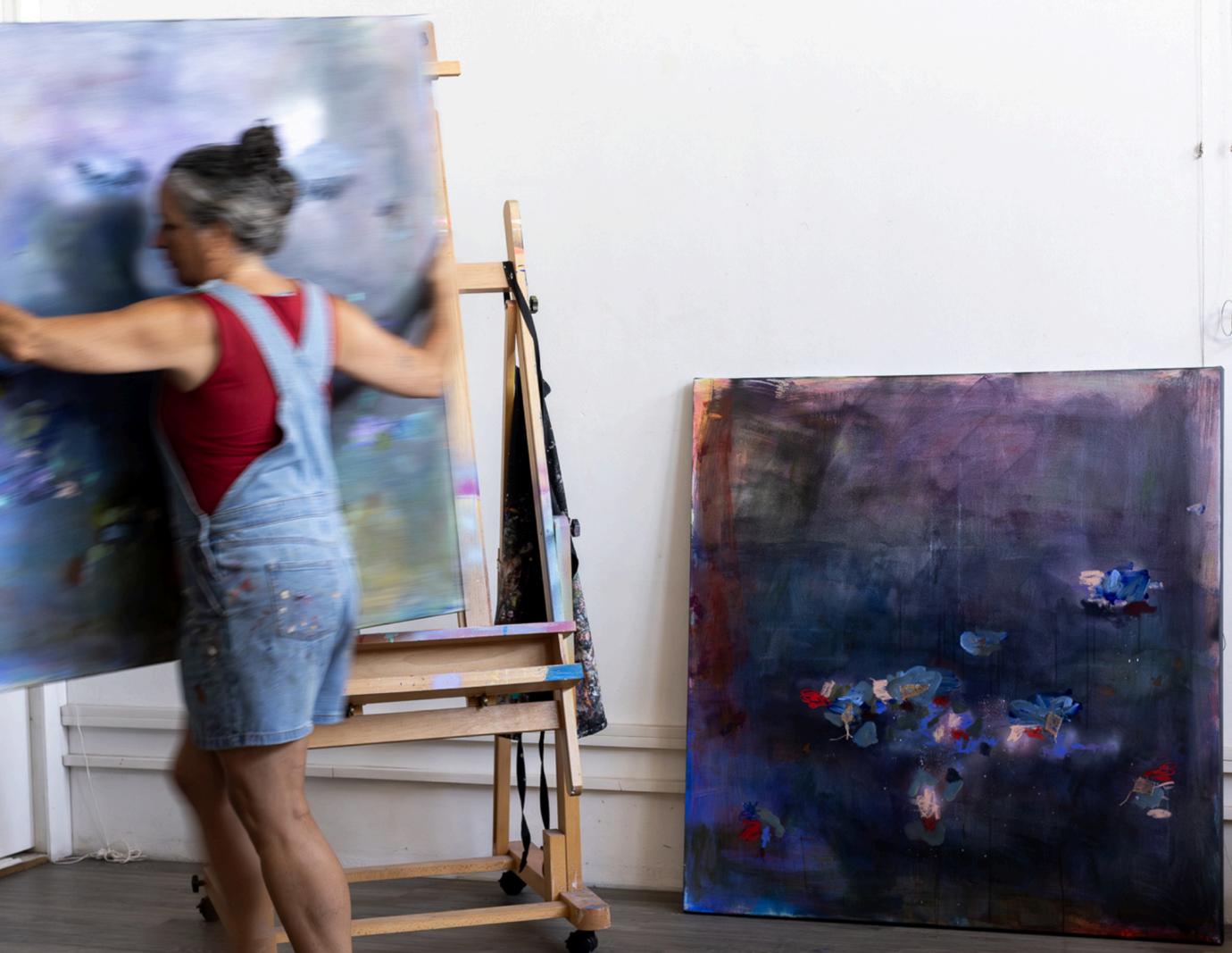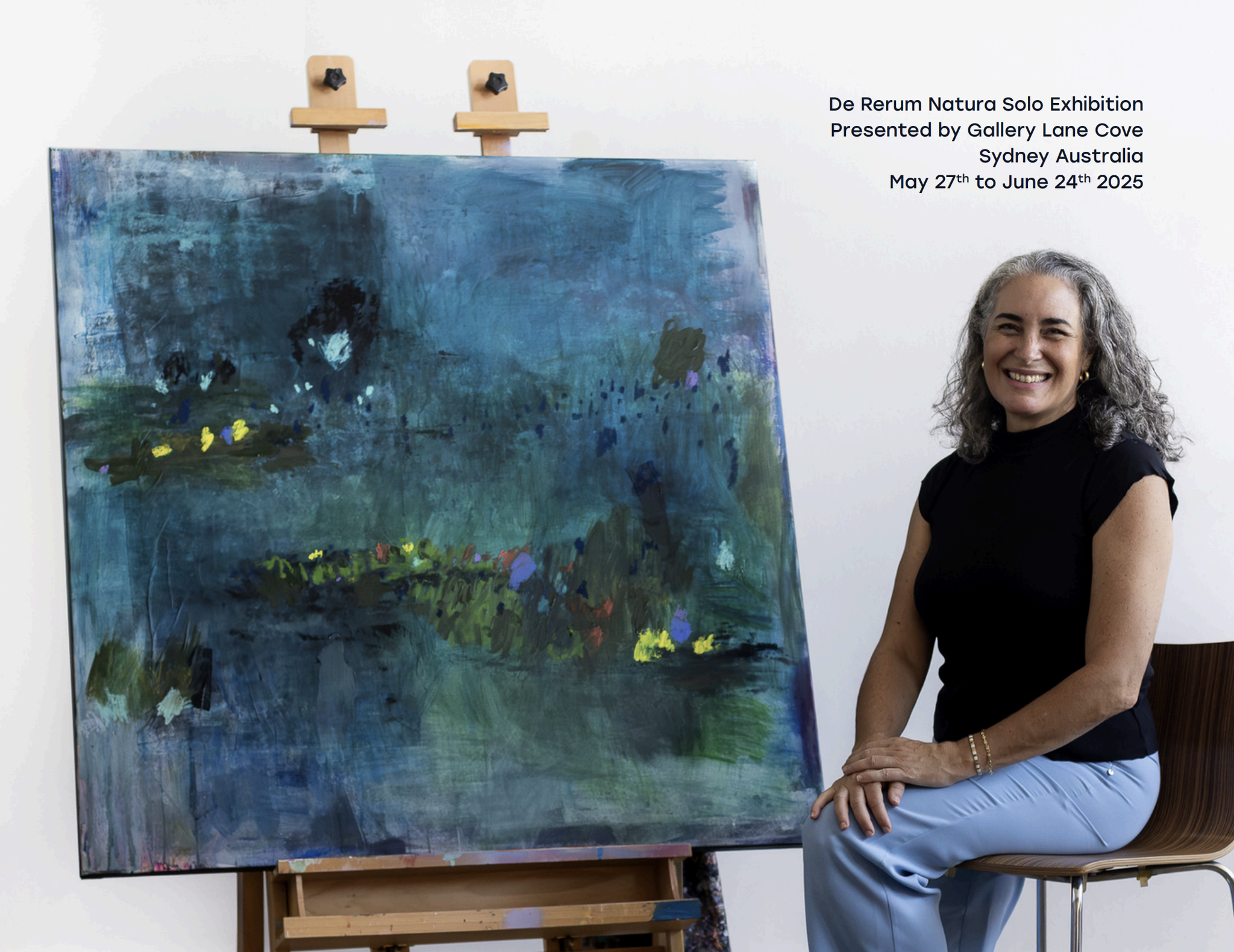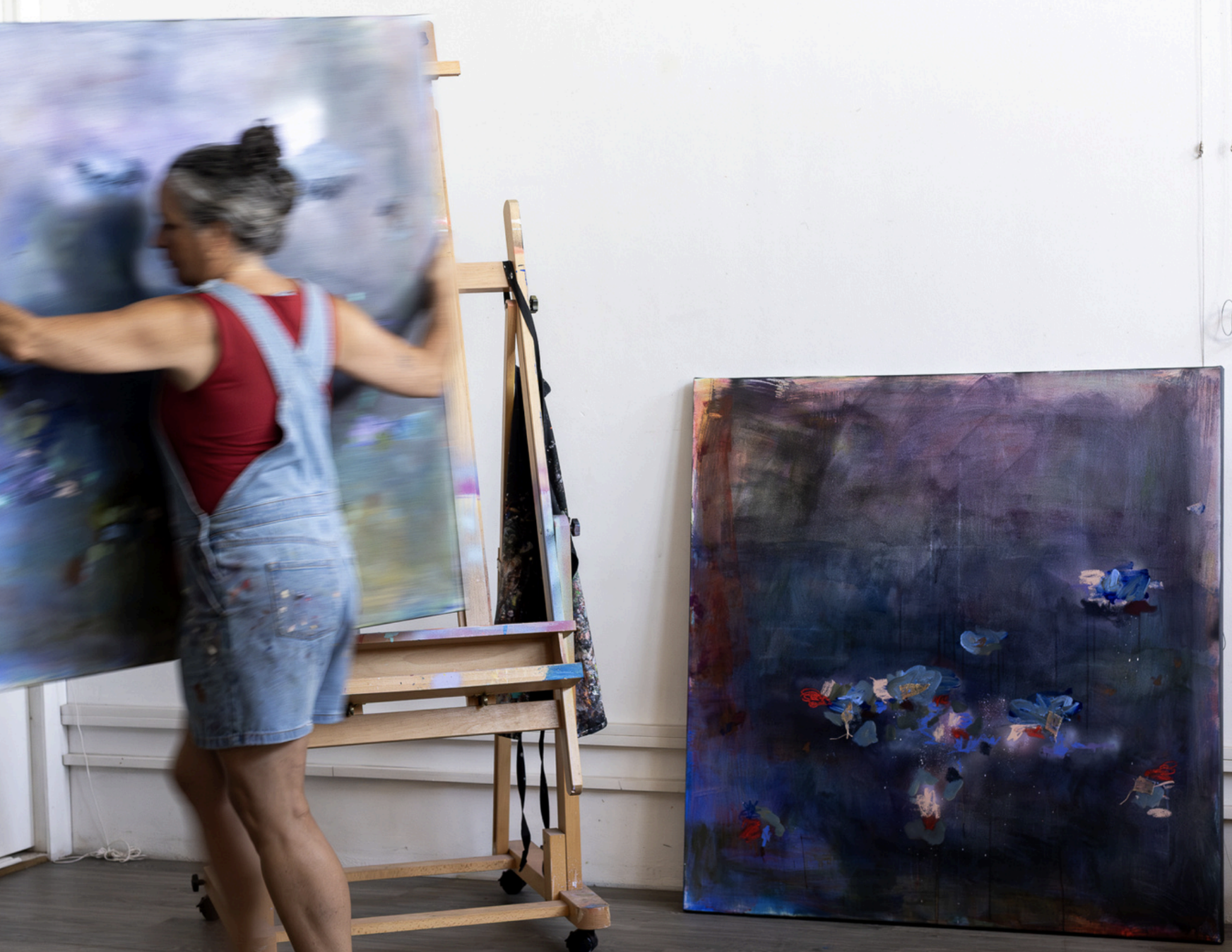
Marisabel Gonzalez: De Rerum Natura — On the Matter of Things

De Rerum Natura by Lucretius, or "On the Nature of Things," is a first-century BC didactic poem that, through poetic language and metaphors, explains Epicurean philosophy exploring atomism, the nature of the mind and soul, and the workings of the universe. It poses an answer to the unknown—in that it remains unknown, but trust there is a process working behind everything spiritual and mystical. Philosophies that humans still muse on today.
By chance, Northern Beaches-based Marisabel Gonzalez came upon this text and found inspiration in its pages. As a medical practitioner and artist, she tries to understand humanity through the natural world. The body, something she studies every day, is something she aims to make sense of—and it was here she found relation to the landscape.
Through her investigation into the body, a sonographer finding patterns and symbols on the screen, she also adds a layer as an artist finding the divide between art and medicine. Gonzalez uses a projector to find a ‘map’ within her medical images. She zooms in so the subject matter disappears and all that is left are the motifs and textures of the image. From here, she layers the images with her photographs of trees and flowers she takes on her walks around the natural world. Unconsciously, she found similarities. The layers and layers echo ancient civilisation and how society and cities were built on the foundations of before.

Finally, the layered images are projected onto a canvas, where Gonzalez begins her creative process, making sense of the structure she finds. There is tension to be captured; such complex indications of life are depicted through textures. Spray paint adds blurring. Oil and pastel create a stickiness that is complex to resolve. Bandages add mixed medium, where the artist rips them to add the energy and physicality of the human who made them.
The results are moving gestural abstract paintings. The audience is left with the transformative effect of art created through this powerful energy as the medium dances across the canvas. Bright colours juxtaposing washes of muted colours. Flecks and spots of contrasting hues evoke those reference ultrasound images or the soft bubbles in nature. They feel like a natural place to rest the eye, to be inspired by more than the surface. Active drips and the visible brushstrokes add the marks and texture of life left behind.
And yet, the works are entirely open to interpretation. Both for the audiences’ perception and also the artist’s cyclic process. One she explores in depth, all mediums imaginable coming to the canvas. A return to the medical world with its systems that inspire her artworks. Patterns, processes, visuals, and concepts/context all work together, coming together in equal importance. What will happen? Where will the medium go? Like the human body and nature—it’s unknown. But instead, there is a trusting of the spiritual process and how it relates to life. One day, humans may know the answers, like all the answers humanity has learned since the first-century BC. But for now, art will have to do.

Post a comment